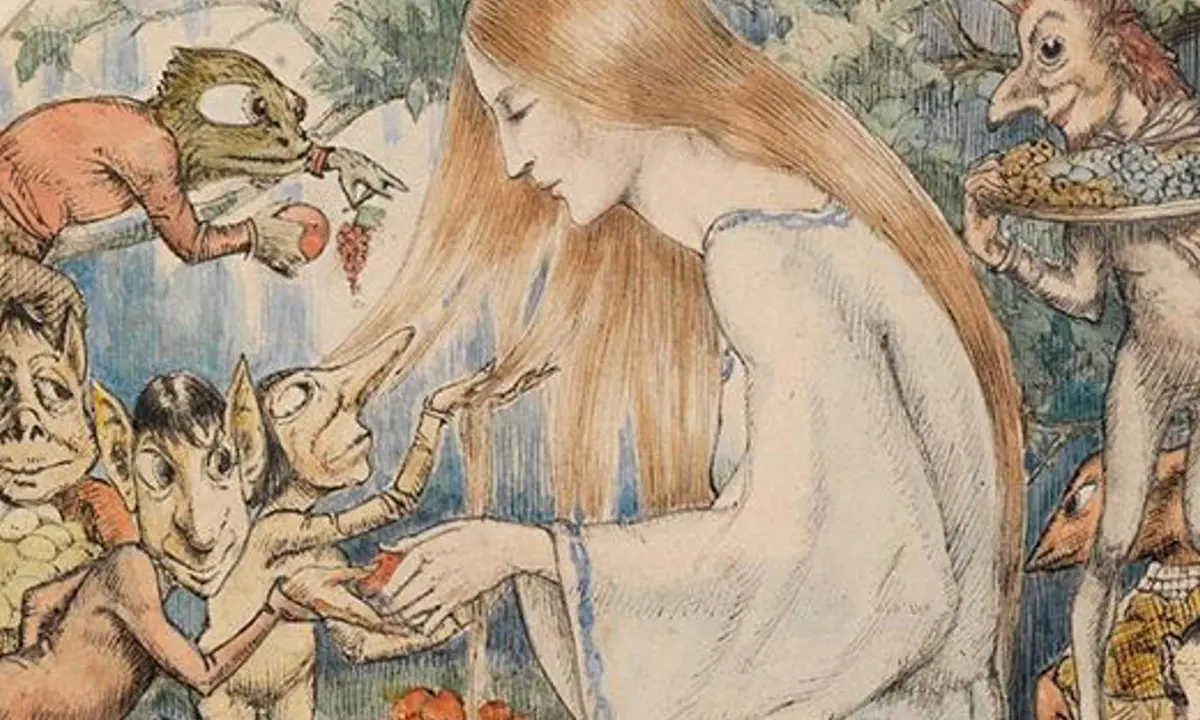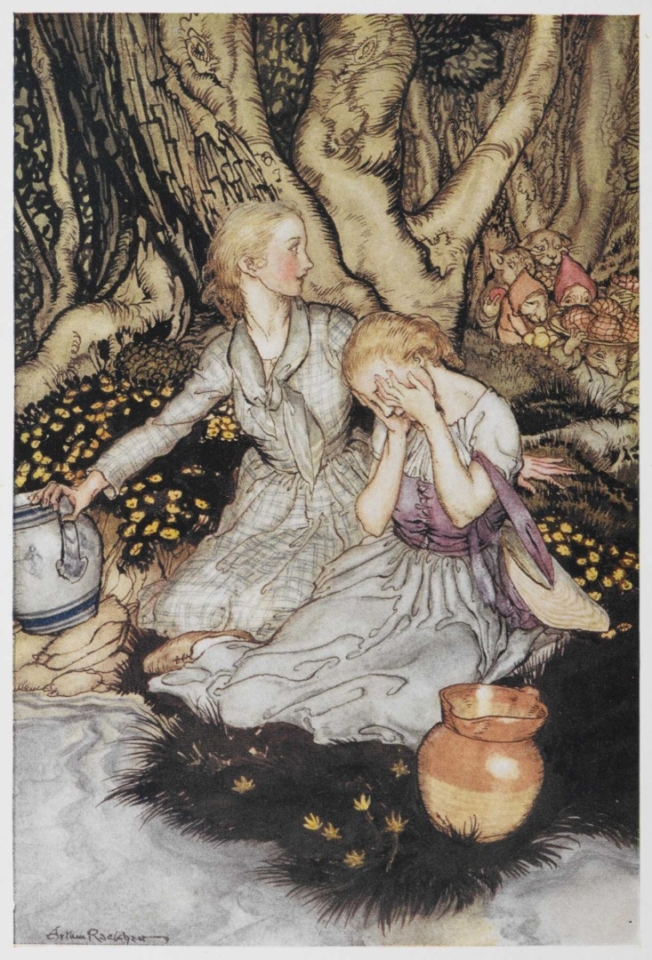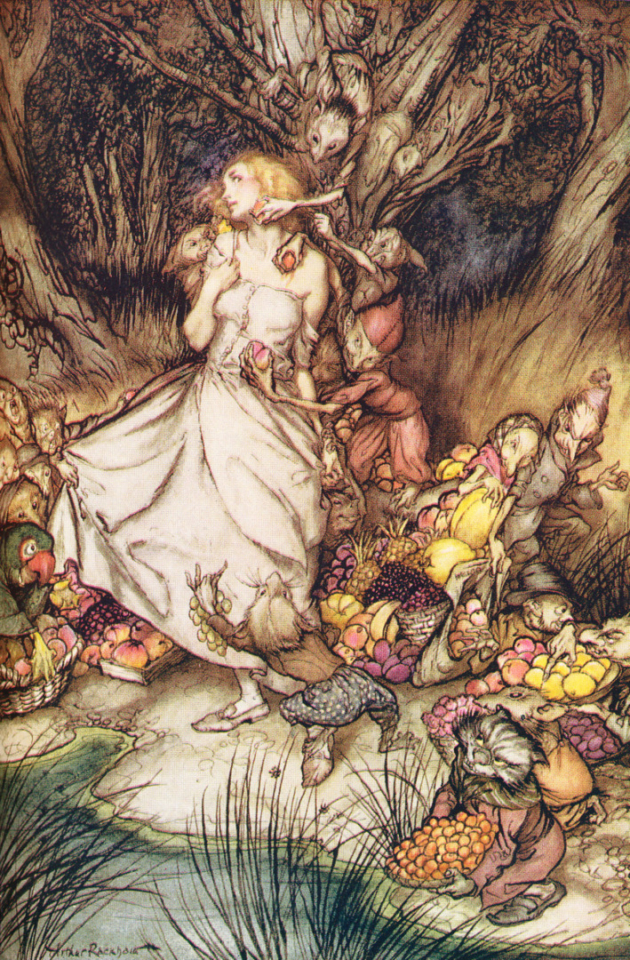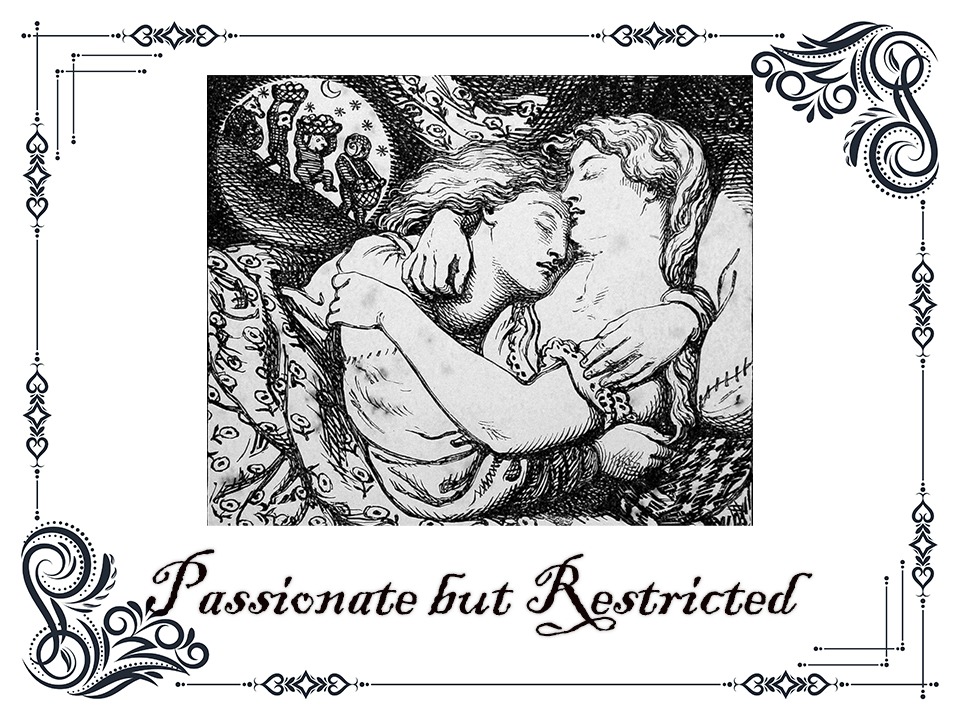Goblin Market

Victorian poetry includes dividedness, and in accordance with this dividedness, one can observe the doubleness and tension of the texts. Rossetti’s poetry is characterized by a tension between religious principles and erotic impulses, and despite being Anglo-Catholic and restricted by strict religious principles, the author appears to be inspired by erotic sentiments. Goblin Market by Christina Rossetti is a multilayered and sophisticated poem and shows an example of doubleness in Victorian poetry in terms of the oscillation between erotic temperament and religious principles. Laura and Lizzie, the two main characters of this poem, are ”locked together in one nest”, meaning they represent the opposite aspects of one psyche.
Laura seems curious about the Goblin Market residents and their fruits, and through Laura’s passion for goblins and their fruits and the erotic imagery, Rossetti aims to give her sensual excitement of erotic desire in her poetry. Furthermore, Rossetti’s poetry demonstrates an intense faith that is complementary to her dialectical oscillation through Lizzie and religious implications. Lizzie, in the poem, is a figure that resists all the goblins’ temptations and is the resemblance of the sacred. This essay aims to illustrate how the dialectical oscillation between the sacred through Lizzie and religious connotations; and the erotic through Laura and erotic imagery is employed by Rossetti in his poem Goblin’s Market.
Contents
On the one hand, Rossetti introduces the sensual excitement of erotic desire in her poetry, accompanying the sacred as a part of dialectical oscillation through erotic imagery and Laura. As Laura and Lizzie encounter goblins with grotesque appearances and fruit merchants, one can see the first instance of an erotic temperament. Goblins say ”figs to fill your mouth”, and figs are certainly an element for sexual desire. In Laura’s response, the erotic temperament is evident in her attention to their invitation and her receptive attitude towards it. The lines ”with tingling cheeks and finger tips” exemplify Laura’s curiosity about these goblins and their fruit. Thus, the writer depicts fruits’ roots as ”hungry and thirsty”, representing Laura’s thirst and hunger for sexual desire. While Lizzie warns Laura not to look at goblin men, Laura cannot control herself from looking at them, driven solely by her sexual desire. Being attracted by ”luscious grapes” and the ”warm wind”, Laura ”chose to linger”, meaning she makes her decision to accompany goblins. Thus, the goblin’s voices are like the ”voices of doves” for her, and she stretches her neck, making her body more visible to goblins representing sexual desire again. Eventually, Laura ‘sucks’ their fruit, symbolizing the manifestation of an erotic temperament, and the juice of the fruit also represents the juice of a sexual encounter. Thus, when Laura and Lissie are at their homes, Laura’s longing for night connotes her longing for sexual desire. As a result, through the use of sexual images as well as Laura herself, Rossetti’s erotic temperament can be seen as a component of her poetry’s dialectical oscillation.

Story
On the other hand, one can also see the intense faith in Rossetti’s poetry as a part of her dialectical oscillation through Lizzie and religious connotations. Even though Laura is curious about the goblins’ invitation, her sister Lizzie is indifferent and cautious to their invitation, resembling religious principles. Lizzie deems the erotic pleasure provided by goblin men through fruits to be an evil act. Lizzie knows that they should not buy these fruits, and ”with clasping arms and cautioning lips”, she tries to cover Laura from these grotesque goblins. Thus, this poem contains several references to the Bible, which represents strict religious principles, and Lizzie makes these references throughout the poem. Lizzie, despite Laura’s yielding to temptation, tells a story about Jeanie, a woman who has fallen from grace, showing strict religious elements. When Laura ”dwindles”, Lizzie also sits ”listless”, and decides to save her sister by going to market. As Lizzie is sexually harassed by the Goblin man, they repeatedly attempt to seduce her, but Lizzie remains silent; she is able to resist temptation and returns home, showing her religious faith. As a result, a reader of Rossetti’s poetry can gain a deeper understanding of the sacred that is accompanied by the erotic through Lizzie and religious elements.

Result
To conclude, a key characteristic of Christina Rossetti’s Goblin Market is the dialectical oscillation between the sacred and the erotic through the depiction of two sisters, Laura and Lizzie, and erotic and religious imagery. Occasionally, her poetry introduces the sensual excitement of erotic desire, while on the other hand, it negates it. Laura, who seems to be curious about goblins’ invitations and their fruit, is the resemblance of erotic temperament in this poem. Even though her sister Lizzie warns her not to be enchanted by these evil fruits, Laura’s curiosity never ends, and she eventually ”sucks” the fruit. Thus, there are also several erotic imageries like ”figs”, ”luscious grapes”, and the ”juice” to show the erotic temperament. There is also the representation of the sacred and intense faith through Lizzie’s character and religious connotations. Lizzie is indifferent to goblins and tries to cover Laura. Laura is warned by Lizzie that the fruit is evil, and she tells a story about a fallen woman to protect her sister. She resists the goblins and does not submit to their seduction towards the end, resembling religious principles.

That was a smooth dialectical meanings of analyzes thanks for writer, it will be astonishing for me. :)